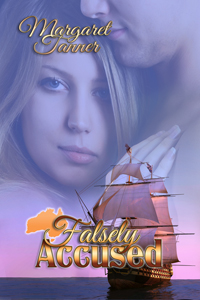 |
| Mata Hari Performing |
NOTE: The source I am using differs
from most, especially Margaretha’s early life but I cannot ignore this, which gives more dimension to her character. I will let you decide which to take home to your family by making clear
the variances in the below text.
Mata Hari was born in Holland on August 7,
1876 as Margaretha Geetruida Zelle. Her parents were religious; she
grew up Roman Catholic and was sent to a convent at the early age of 14. Other
sources say: “Her mother dead and her adored father bankrupt, teenage
Margaretha was sent to train as a kindergarten teacher, only to be seduced by
the headmaster.” And another source: “Following her
mother's death, Mata Hari and her three brothers were split up and sent to live
with various relatives.”
At 18 while on holiday in The
Hague, Margaretha met a Scotsman named MacLeod and married him. He was a drunk
and a wife abuser. He did—well you know—the typical things brutal men do to
women so I won’t bore you with them. Other sources say: “Disgraced and bored,
the girl answered a newspaper ad to meet and marry a career colonial officer
twenty years her senior who would be soon returning to the Dutch East Indies.”
My source continues: He took her to Java where he continued his savagery plus
he was a bounder and unfaithful.
 |
| Margaretha in Java |
No longer a wide-eyed, postulant
schoolgirl, her experiences caused Margaretha to deviate from her chaste
background. She studied books in the art of sensual love performed in Buddhist
temples. She was also introduced to the evocative ritual dances that eventually
made her so popular. (Some sources don’t mention this at all.)
Usually, life takes strange turns
we never expect. Margaretha endured the savagery of MacLeod, studied sensual
love—it’s not recorded if she used this on him or anyone else for that matter
while in Java—as her husband gadded about with other women. Some were jealous
he was married. One was their nurse who took care of Margaretha & MacLeod’s
young son. MacLeod rejected her and in revenge the nurse poisoned their son. Another
source: “The marriage dissolved in a nightmare of drinking, gambling, and
vicious hatred following the death of their son...”
From now on, I will continue with
my source.
Margaretha emerged from this a
changed woman. She never showed outward emotion but went forth in life with a
face etched in steel. She hated men and she hated MacLeod whom she blamed for
the death of their son. Without remorse she reportedly strangled the nurse.
Back in Europe, Margaretha lead a
life of the narcissistic.
In France, Margaretha became Mata
Hari, a woman born in “...India within the sacred caste of Brahma”. After the
birth of two children, her body wasn’t the svelte one of her youth, but that
did not stop her from performing naked on stage in Paris. She spoke in a soft,
seductive voice and danced erotic dances, some graceful, others lewd, only
before seen in Buddhist temples.
 She was a sensation throughout
Europe. Men begged to have her in their beds. She would oblige them for no less
than $7,500 a night. Her lovers listed in the Who’s Who of the times; prime
ministers, princes, high up men in their governments. She demanded luxurious apartments in Paris,
had milk baths to keep her skin young and supple. When her influential lovers
lost their money, she would kick them to the curb and take another.
She was a sensation throughout
Europe. Men begged to have her in their beds. She would oblige them for no less
than $7,500 a night. Her lovers listed in the Who’s Who of the times; prime
ministers, princes, high up men in their governments. She demanded luxurious apartments in Paris,
had milk baths to keep her skin young and supple. When her influential lovers
lost their money, she would kick them to the curb and take another.
She enjoyed sex and would visit
brothels (probably not for $7,500) even as she hated the men who bedded her, using
them for her gain. She was vain, self-indulgent, cruel and ripe to be
approached by the Germans. They sent her to spy-school in Lorrach and gave her
what is now known as a pre-war code number.
Mata Hari was relentless. She
slept with men then betrayed them. She learned of their plans and sent those
plans to the Germans. The figures speak for themselves. It was declared by the
judge at her trial she was considered responsible for the deaths of 50,000 allied
troops but this number seems trivialized. Other sources say the number is closer
to 100,000.
In the end, the Germans betrayed
Mata Hari, but she did not think she would die. Too many of her lovers told her
of their plans for her escape. When those failed, it was suggested she plea
pregnancy, but by now realizing her doom was fixed, Mata Hari refused to see
the doctor.
Vincennes: At the age of 41, Mata
Hari was tied with "crimson ropes" to a young tree stripped naked of leaves and branches. She refused the blindfold, did not wince or show emotion when
the firing squad cocked their rifles. Several of her lovers watched from the
sidelines, some perhaps part of the squad.
She did not utter a sound, but smiled
when the major barked the final command to fire. Mata Hari, once a postulant in
a convent, her name Margaretha Geetruida Zelle died at 5:47 AM on October 15,
1917, a hated and loved legend of her time.
Many thanks to:
Main source: The People’s Almanac by David Wallechinsky & Irving Wallace,
Doubleday & Co., Inc., Garden City, NY, 1975.
Penn State Science: http://science.psu.edu/news-and-events/2007-news/Shipman7-2007.htm
All pictures come from
WikiCommons Public Domain: his media file is in the public
domain in the United States. This applies to U.S. works where the
copyright has expired, often because its first publication
occurred prior to January 1, 1923. See this page
for further explanation.
~~~~~~
For more reading, please see Books We Love website: http://bookswelove.net/
Or, for a good read set in London 1664:
 | |
| Buy At |

















.jpg)






